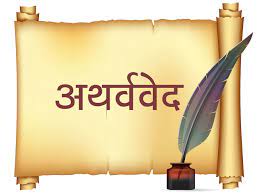The Vedas
The Vedas are the religious texts which inform the religion of Hinduism (also known as Sanatan Dharma meaning “Eternal Order” or “Eternal Path”). The term veda means “knowledge” in that they are thought to contain the fundamental knowledge relating to the underlying cause of, function of, and personal response to existence.
They are regarded as one of the world’s oldest, if not the oldest, religious works. Since they might be characterized as holy writings describing the nature of the Divine, they are frequently referred to as “scripture,” which is true. The Vedas, however, is not thought to have been revealed to a particular person or people at a particular historical moment, unlike the scriptures of other religions; rather, it is believed that they have always existed and were discovered by sages during deep meditation at some unknown time before 1500 BCE.
In India, between approximately 1500 and 500 BCE (the so-called Vedic Era), the Vedas were written down after many generations of oral transmission from teacher to pupil. In order to maintain the integrity of what was original heard, masters would make students learn them both forward and backward, with a focus on correct pronunciation.
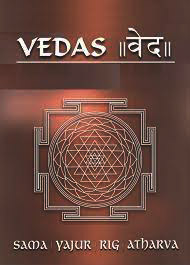
The Vedas are therefore regarded as Shruti in Hinduism meaning “what is heard” as contrasted with other texts designated Smritis (“what is remembered”), accounts of great heroes and their struggles in works such as the Mahabharata, Ramayana, and Bhagavad Gita (although some sects of Hinduism regard the Bhagavad Gita as Shruti). The texts which make up the Four Vedas are:
Rig Veda
Sama Veda
Yajur Veda
Atharva Veda
Each of these is further divided into types of text included within them:
Aranyakas – rituals, observances
Brahmanas – commentaries on said rituals
Samhitas – benedictions, prayers, mantras
Upanishads – philosophical narratives and dialogues
Since the Upanishads were the first Vedic texts to be translated into foreign languages and because they provide their discourse in conversation and narrative form, they are the most well-known and frequently read of the Vedic texts. The four Vedas, on the other hand, are thought to be the exact sounds of the Divine that, when spoken or sung, imitate the universe’s first vibrations.
The Vedas, then, are thought to reproduce the exact sounds of the universe itself at the moment of creation and onwards and so take the form, largely, of hymns and chants. In reciting the Vedas, one is thought to be literally participating in the creative song of the universe which gave birth to all things observable and unobservable from the beginning of time. The Rig Veda sets the standard and tone which is developed by the Sama Veda and Yajur Veda while the last work, Atharva Veda, develops its own vision which is informed by the earlier works but takes its own original course.
Rig Veda:
The oldest text is the Rig Veda, which consists of 10 books (sometimes referred to as mandalas), 1,028 hymns, and 10,600 words. These verses address fundamental concerns about life as well as proper religious attendance and practice, based on the sages’ initial understanding of universal vibrations.
According to this philosophical analysis, the purpose of a human being is to be questioned as one progresses from meeting one’s basic wants to realizing one’s potential and uniting with the Divine. In hymns to a number of deities, most notably Agni, Mitra, Varuna, Indra, and Soma, who would later be recognized as avatars of the Supreme Over-Soul, First Cause, and source of existence, Brahman, the Rig Veda encourages these kinds of inquiries. Several Hindu schools of thought contend that Brahman, whose song the sages later heard, created the Vedas.
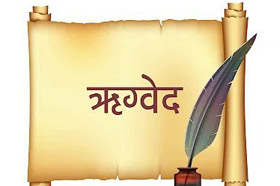
Sama Veda:
The Sama Veda is a collection of liturgical songs, chants, and scriptures intended to be sung. Its name means “Melody Knowledge” or “Song Knowledge.” The Rig Veda serves as the lyrics to the Sama Veda’s melodies, and as some historians have noted, the material of the Sama Veda is virtually entirely taken from the Rig Veda. It has 1,549 verses, which are split into two parts: the gana (melodies) and the arcika (verses). It is said that the melodies inspire dancing, which when coupled with the lyrics, lifts the soul.
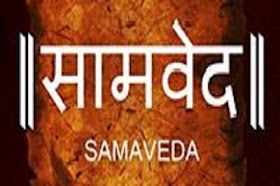
Yajur Veda:
The Yajur Veda, also known as “Worship Knowledge” or “Ritual Knowledge,” is a collection of mantras, chants, and recitations used in worship rites. Its substance, like that of the Sama Veda, is derived from the Rig Veda, but the 1,875 verses’ primary subject is the liturgy of religious observances. It is typically thought of as having two “components” that are aspects of the total rather than separate pieces. The less clear and clumsily organized verses are referred to as the “dark Yajur Veda,” whereas the more understandable and well-organized verses are called the “light Yajur Veda.”
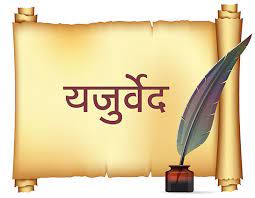
Atharva Veda:
Distinct from the first three, the Atharva Veda (“knowledge of Atharvan”) is concerned with magical spells to ward off bad spirits or danger, chants, hymns, prayers, initiation rituals, marriage and funeral ceremonies, and observations on everyday life. The priest Atharvan, who is reputed to have been well-known as a healer and a religious innovator, is supposed to be the source of the name. The work is believed to have been created by a single person (perhaps Atharvan, but that is unlikely) or group of individuals about the same period as the Sama Veda and Yajur Veda (c. 1200-1000 BCE). There are 730 hymns in 20 volumes, some of which are based on the Rig Veda.
